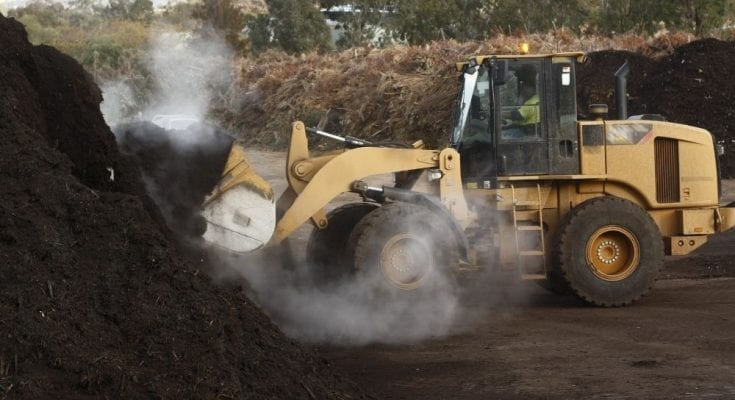Composting is a great method for farmers to cut back on waste. It also can help save money by reducing the need to buy supplements for soil health and nutrients. This process breaks down byproducts of farming and turns them into rich, fresh soil. The different types of farm composting systems reflect the needs and size of the farms that use them. Most commonly, commercial farms will either use turned, static, or in-vessel composting.
Turned Aerated Composting
This is one of the better-known models of the different types of farm composting systems. Turned aerated composting utilizes windrows. These are long piles of organic waste material that typically run the lengths of fields. A special piece of equipment, called a compost turner, is used to routinely mix the material.
This helps break up any chunks that aren’t breaking down fast enough. It also flushes a pile with fresh air which speeds up the growth and spread of helpful bacteria that break down the material over time. This method is highly effective, though it can consume significant space on a farm, depending on how much composting is needed.
Static Aerated Composting
Much like the former technique, static aerated composting really on oxygen supporting the rapid growth of bacteria cultures. Instead of actively turning material, though, static piles can sit. To be properly aerated, layers of larger material fragments are placed between layers of waste material.
Wood chips are most used, and it can be very convenient to layout a good-sized windrow this way. This is a fast method of composting in which nature is left entirely up to its own devices. Not turning the soil allows for helpful insects to create burrows and help break down larger material rapidly.
In-Vessel Composting
This type of composting works well for farms with limited space. It can be as efficient as the traditional windrow technique without expending nearly as much ground space. As the name suggests, in-vessel composting utilizes a self-contained machine. Waste is placed inside the vessel along with any additives such as cultures and soil nutrients. The vessel features a built-in turning paddle that processes material in the same way as straddle composters. The main downside is that the amount of compost that can be made is limited to the size of the vessel, whereas the previous two methods can simply make bigger compost piles.
FAQ
What is turned aerated composting?
This is one of the better-known models of the different types of farm composting systems. Turned aerated composting utilizes windrows. These are long piles of organic waste material that typically run the lengths of fields. A special piece of equipment, called a compost turner, is used to routinely mix the material.
Additional Resources:
Belize Blue Hole
Bananas
Strawberries



